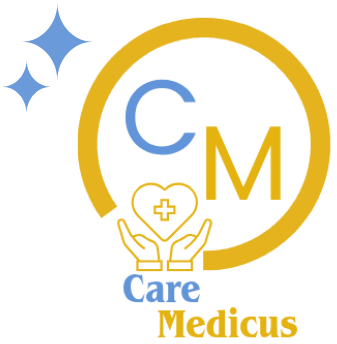The U.S. healthcare system is notoriously complex. Administrative costs now represent more than 40% of total hospital expenses, with a staggering $496 billion spent annually on billing and insurance-related tasks alone. For years, healthcare providers have navigated a labyrinth of manual data entry, intricate coding systems, and ever-changing payer rules. This process is not only time-consuming but also riddled with errors—up to 80% of medical bills contain inaccuracies, contributing to an estimated $68 billion in annual losses from fraud and basic mistakes.
This complex administrative burden doesn’t just affect the bottom line; it diverts precious resources away from patient care and adds to physician burnout. However, a significant transformation is underway. Artificial intelligence (AI) and automation are stepping in to streamline these outdated processes, offering a path toward greater efficiency, accuracy, and financial stability.
Today, approximately three-quarters of healthcare organizations use automation in their revenue cycle management (RCM), and half have started using AI to make these systems even smarter. These technologies are no longer a distant vision for the future; they are practical tools being implemented now to solve some of the industry’s most persistent challenges. This guide will explore how AI and automation are fundamentally reshaping medical billing, from coding and claims submission to denial management and patient engagement.
The Cracks in Traditional Medical Billing
Before we look at the solutions, it’s important to understand the scale of the problem. Traditional medical billing is a manual, labor-intensive process that creates significant inefficiencies and financial strain for healthcare organizations.
- High Rate of Human Error: Manual data entry is prone to mistakes, with error rates reaching up to 4%. These seemingly small errors have massive consequences. Studies show that 75% of medical bills contain coding mistakes, and 26.8% of primary diagnoses are coded incorrectly. This leads to claim denials, delayed payments, and lost revenue.
- Complex and Changing Regulations: Healthcare is a heavily regulated industry. Providers must comply with an average of 629 distinct regulatory mandates, costing the industry about $39 billion annually. Payer requirements are also in constant flux, with over 100,000 changes occurring between 2020 and 2022 alone. Keeping up with these updates manually is a monumental task.
- Costly Claim Denials: Inaccurate claims get denied, and denial rates are rising. In just one year, denial rates jumped from 12% to 15%, and these denials can consume up to 5% of a provider’s net patient revenue. The administrative work required to appeal and resubmit these claims adds to the already heavy workload.
- Massive Administrative Spending: The administrative side of healthcare is incredibly expensive. In 2019, administrative spending reached $950 billion. On average, U.S. doctors spend nearly $83,000 per year dealing with payers—almost four times more than their Canadian counterparts.
These challenges create a system where providers are spending more time and money on paperwork than on patient care, all while losing revenue to correctable errors.
Read More: Minimizing Claim Rejections in 2025: A Guide For Healthcare Providers
The Rise of AI and Automation in Medical Billing
AI and automation technologies are uniquely suited to address the core problems of traditional medical billing. By taking over repetitive, rule-based tasks, they introduce a level of accuracy and efficiency that is impossible to achieve manually. Key technologies driving this transformation include Robotic Process Automation (RPA), Machine Learning (ML), and Natural Language Processing (NLP).
- Robotic Process Automation (RPA): RPA uses “bots” to automate structured, repetitive tasks like data entry, claim submission, and payment posting. As Karna Palanivelu, SVP of Operations at Global Healthcare Resource, explains, “RPA in healthcare RCM automates rule-based, structured tasks, freeing staff from recurring activities and reducing human error.”
- Machine Learning (ML): ML algorithms analyze vast datasets to identify patterns, make predictions, and learn over time. In medical billing, ML is used for predictive analytics to forecast claim denials, detect fraudulent activity, and optimize coding.
- Natural Language Processing (NLP): NLP gives computers the ability to understand human language. This technology is revolutionizing medical coding by reading unstructured clinical notes from Electronic Health Records (EHRs) and suggesting the most accurate medical codes.
Together, these technologies are automating and optimizing every step of the revenue cycle.
Core Applications of AI in Revenue Cycle Management
AI is not a single, one-size-fits-all solution. It’s a suite of tools that can be applied to specific pain points within the RCM process. Here are some of the most impactful applications today.
AI-Powered Medical Coding
Medical coding is one of the most complex and error-prone areas of billing. AI, particularly NLP, is transforming this process by reading clinical documentation and automatically suggesting the correct CPT, ICD-10, and HCPCS codes. This increases coding accuracy and reduces the risk of compliance issues. With 90% of revenue cycle leaders believing generative AI will become increasingly important in medical coding, the shift is already happening. AI-powered systems have been shown to reduce coding errors by up to 50%, which is a game-changer for claim acceptance rates.
Automated Claims Processing and Submission
From scrubbing claims for errors to submitting them to payers, AI and RPA are automating the entire claims lifecycle. AI-driven platforms can perform “claims scrubbing” in real-time, identifying and flagging potential errors before a claim is even sent. This proactive approach significantly increases the clean claim rate—the percentage of claims accepted on the first submission. One company, Global Healthcare Resource, reported achieving a 99% clean claim rate for its clients by using automation. This leads to faster reimbursements and a more predictable cash flow.
Predictive Analytics for Denial Prevention
Instead of reacting to denials after they happen, AI allows providers to prevent them. Predictive analytics tools analyze historical claims data to identify patterns associated with denied claims. By flagging high-risk claims before submission, these systems give billing staff the chance to correct potential issues proactively. This approach yields impressive results; organizations using predictive analytics have seen at least a 10% decrease in denials within six months, and one health system reduced its prior-authorization denials by a remarkable 22%.
Automation in Eligibility and Prior Authorization
Verifying a patient’s insurance eligibility and obtaining prior authorization for services are tedious, time-consuming steps. RPA bots can automate these processes by logging into payer portals and retrieving the necessary information in seconds. More than 200 healthcare organizations are already using automation to verify eligibility with 16 major payers. For prior authorizations, electronic systems powered by automation can reduce processing times from weeks to hours. In some cases, providers receive instantaneous approval, saving organizations an estimated $450 million annually.
AI for Fraud Detection and Compliance
Healthcare fraud costs the U.S. billions of dollars each year, and even simple billing mistakes can lead to costly audits and penalties. AI systems excel at identifying anomalies and suspicious patterns in billing data that might indicate fraud. Machine learning algorithms trained on vast datasets can flag potentially fraudulent claims with high accuracy—some systems have demonstrated 83.35% accuracy without any human oversight. This helps protect practices from financial penalties and reputational damage.
The Measurable Benefits of Adopting AI
The shift toward AI and automation isn’t just about embracing new technology; it’s about driving tangible business outcomes. Healthcare organizations that have integrated these tools are seeing significant improvements across the board.
Increased Accuracy and Fewer Errors
By automating manual processes, AI dramatically reduces the opportunity for human error. Clinics using AI-powered RCM solutions have reported getting paid 20-40% faster, largely due to the reduction in claim denials. Some providers have seen denial rates drop by as much as 40% after implementing denial management automation, while others have achieved an average monthly drop of 4.6%.
Reduced Administrative Costs
Automation streamlines workflows and handles repetitive tasks, allowing organizations to operate more efficiently. McKinsey research indicates that AI in medical billing can cut administrative costs by up to 30%. For a health system with $5 billion in revenue, even a small improvement in the cost to collect—from 3.74% to 3.51% through automation—can result in $11.5 million in annual savings. By reducing the administrative burden, staff can be reallocated to more complex, patient-facing roles.
Enhanced Patient Experience
A complicated and confusing billing process is a major source of patient frustration. AI can improve the patient experience by offering more transparency and support. AI-powered chatbots can handle patient queries 24/7, explaining charges and setting up payment plans. Automated systems can provide accurate cost estimates before treatment and send digital payment reminders, simplifying the financial aspect of care and enhancing patient satisfaction.

Preparing for an AI-Driven Future
While the benefits are clear, adopting AI and automation comes with its own set of challenges. These include the upfront investment, the need for staff training, and data security concerns. However, the role of human expertise is not diminishing—it’s evolving.
AI systems are powerful tools, but they still require human oversight. Experienced medical billers and coders are needed to handle complex cases, validate AI-generated suggestions, and ensure compliance with ever-changing regulations. The future of medical billing is not about replacing humans with machines, but about creating an AI-augmented workforce where technology handles the repetitive work, freeing up professionals to focus on strategic, high-value tasks.
For organizations looking to begin their journey, experts recommend starting with pilot programs in specific areas like automated coding or denial management. Choosing scalable technologies and investing in comprehensive training will be key to a successful transition.
The Path Forward
At Care Medicus, we believe that the future of healthcare depends on embracing innovation that simplifies complexity. The administrative challenges that have long burdened the U.S. healthcare system can no longer be managed with outdated processes. Artificial intelligence and automation now offer a transformative path forward—one where billing becomes faster, smarter, and more transparent.
Now is the time for healthcare organizations to act. By integrating AI-driven solutions, you can minimize costly errors, reduce administrative overhead, and empower your teams to focus on what truly matters—delivering exceptional patient care. Partner with Care Medicus to modernize your operations, strengthen financial performance, and lead your organization confidently into the next era of healthcare innovation.
Together, we can turn automation into advancement and redefine what efficiency means in modern healthcare.







Leave a Reply